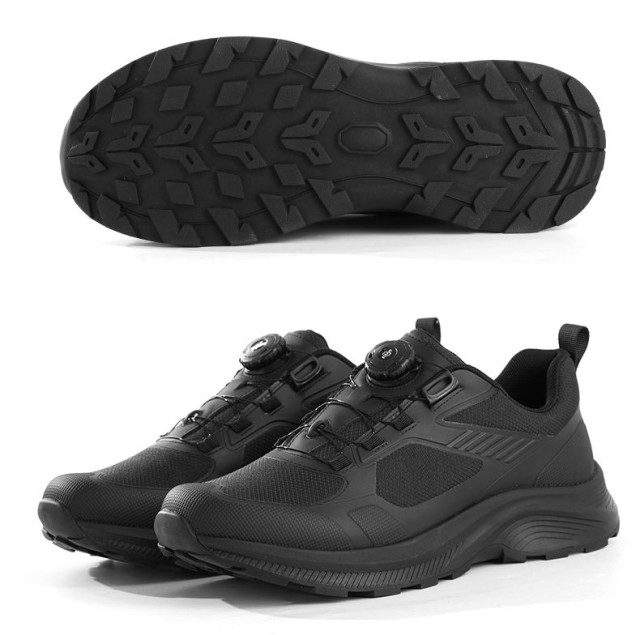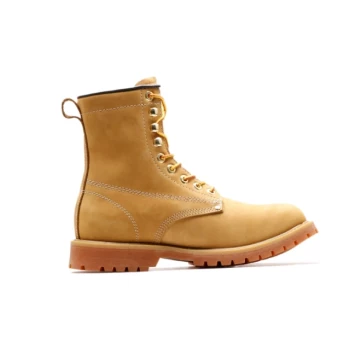Outdoor enthusiasts know that quality walking boots can make or break an adventure. But what transforms a good boot into a reliable companion on rugged trails? The answer lies in deliberate engineering choices—from pressure-distributing soles to ankle-support systems—that address three critical needs: comfort during long treks, protection against injuries, and long-term durability.
The Science Behind Walking Boot Comfort
Biomechanics of Proper Fit and Pressure Distribution
Ill-fitting boots cause blisters, hot spots, and fatigue. High-performance designs use:
- Anatomically shaped lasts (foot molds) to match natural foot contours
- Multi-density midsoles that cushion high-impact zones (like heels) while maintaining stability
- Heel-lock lacing systems to prevent slippage, reducing friction and pressure points
Research shows elastic or adjustable lacing systems adapt to foot swelling during prolonged use, maintaining consistent support without over-tightening.
Material Technologies for Moisture and Impact Resistance
Modern boots combine breathability and waterproofing through:
- GORE-TEX® membranes, which block external moisture while allowing sweat vapor to escape
- Antimicrobial linings to minimize odor-causing bacteria
- Shock-absorbing EVA foam in midsoles, reducing joint strain on downhill sections
A well-ventilated boot interior can reduce moisture buildup by over 50% compared to non-breathable materials, keeping feet dry and reducing blister risks.
Safety by Design: Protecting Your Feet
Ankle Support Engineering for Uneven Terrain
Ankle rolls account for nearly 25% of hiking injuries. Effective boots counteract this with:
- High-cut designs (extending above the ankle) to limit lateral movement
- Stiff yet flexible collars that brace ankles without restricting natural motion
- Reinforced heel counters to stabilize the foot’s rear during sudden directional changes
For example, boots with molded polyurethane ankle supports reduce sprain risks by redistributing lateral forces across the foot’s structure.
Traction Patterns and Slip Resistance Mechanisms
Sole treads aren’t just about depth—their geometry and rubber compound determine grip:
- Multi-directional lugs provide traction whether moving uphill, downhill, or sideways
- Vibram® or similar sticky rubber maintains flexibility in cold temperatures for better surface contact
- Self-cleaning grooves prevent mud or snow from clogging the tread
Field tests indicate that boots with widely spaced, angular lugs improve slip resistance on wet rocks by up to 40% versus flat soles.
Extending Boot Lifespan
Maintenance Techniques for Sole Integrity
A worn-out sole compromises safety. Prolong its life with:
- Regular cleaning to remove abrasive dirt particles that degrade rubber
- Avoiding prolonged UV exposure, which hardens and cracks soles
- Rotating between multiple pairs to allow materials to decompress between uses
Waterproofing Preservation
Even advanced membranes lose effectiveness if neglected. Key steps:
- Clean boots with a soft brush and pH-neutral soap to remove debris clogging pores.
- Apply conditioners (e.g., wax for leather, silicone sprays for synthetics) to restore water repellency.
- Air-dry away from heat sources to prevent material warping.
Properly maintained waterproof boots can retain over 80% of their original performance after 2–3 years of use.
Step Confidently with 3515’s Engineered Footwear
Every stitch and sole layer in 3515’s walking boots is designed to address real-world challenges—whether you’re a distributor supplying outdoor retailers or a brand owner seeking durable OEM solutions. Our expertise in biomechanically optimized designs, high-performance materials, and safety-focused construction ensures your customers experience fewer injuries, greater comfort, and longer-lasting gear.
Ready to equip adventurers with boots that outperform? Partner with 3515 to access scalable production tailored to your market’s needs.
Related Products
- Wholesale Durable Safety Boots Manufacturer Customizable Steel Toe Work Boots
- Durable Steel Toe Safety Boots Wholesale & Custom Manufacturing
- Wholesale Slip-On Safety Boots Manufacturer - Custom Puncture-Proof & Steel Toe
- Custom Wholesale Leather Safety Boots Direct Factory Manufacturing
- Wholesale Durable Safety Boots | Custom Steel Toe & Puncture-Resistant Manufacturing
Related Articles
- How to Choose Safety Footwear for Electrical Hazard Jobs: Steel Toe vs. Composite Toe
- How to Choose Between Steel and Composite Toe Boots for Maximum Safety
- How Safety Standards for Steel Toe Boots Protect Workers Beyond Impact Resistance
- Steel Toe Work Boots: Balancing Safety and Comfort for Demanding Jobs
- Steel Toe Boots vs. Modern Alternatives: Making the Right Safety Choice



















